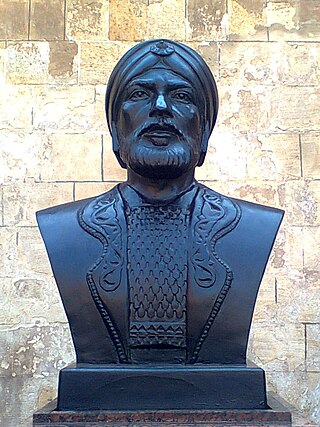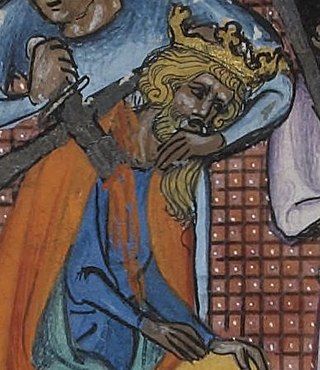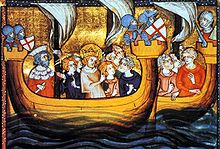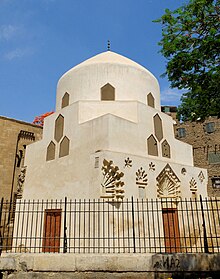
The Ayyubid dynasty, also known as the Ayyubid Sultanate, was the founding dynasty of the medieval Sultanate of Egypt established by Saladin in 1171, following his abolition of the Fatimid Caliphate of Egypt. A Sunni Muslim of Kurdish origin, Saladin had originally served the Zengid ruler Nur ad-Din, leading Nur ad-Din's army in battle against the Crusaders in Fatimid Egypt, where he was made Vizier. Following Nur ad-Din's death, Saladin was proclaimed as the first Sultan of Egypt by the Abbasid Caliphate, and rapidly expanded the new sultanate beyond the frontiers of Egypt to encompass most of the Levant, in addition to Hijaz, Yemen, northern Nubia, Tarabulus, Cyrenaica, southern Anatolia, and northern Iraq, the homeland of his Kurdish family. By virtue of his sultanate including Hijaz, the location of the Islamic holy cities of Mecca and Medina, he was the first ruler to be hailed as the Custodian of the Two Holy Mosques, a title that would be held by all subsequent sultans of Egypt until the Ottoman conquest of 1517. Saladin's military campaigns in the first decade of his rule, aimed at uniting the various Arab and Muslim states in the region against the Crusaders, set the general borders and sphere of influence of the sultanate of Egypt for the almost three and a half centuries of its existence. Most of the Crusader states, including the Kingdom of Jerusalem, fell to Saladin after his victory at the Battle of Hattin in 1187. However, the Crusaders reconquered the coast of Palestine in the 1190s.

The Bahri Mamluks, sometimes referred to as the Bahri dynasty, were the rulers of the Mamluk Sultanate of Egypt from 1250 to 1382, following the Ayyubid dynasty. The members of the Mamluk ruling class were purchased as slaves (mamluks) and manumitted, with the most powerful among them taking the role of sultan in Cairo. While several Bahri Mamluk sultans tried to establish hereditary dynasties through their sons, these attempts were ultimately unsuccessful, with the role of sultan often passing on to another powerful Mamluk.

Abu Ahmad Abdallah ibn al-Mustansir bi'llah, better known by his regnal title Al-Mustaʿṣim bi-llāh, was the 37th and last caliph from the Abbasid dynasty ruling from Baghdad. He held the title from 1242 until his death in 1258.

Sayf al-Din Qutuz, also romanized as Kutuz or Kotuz and fully al-Malik al-Muẓaffar Sayf ad-Dīn Quṭuz, was the Mamluk Sultan of Egypt. He reigned as Sultan for less than a year, from 1259 until his assassination in 1260, but served as the de facto ruler for two decades.

Al-Malik Al-Ashraf Salāh ad-Dīn Khalil ibn Qalawūn was the eighth Turkic Bahri Mamluk sultan, succeeding his father Qalawun. He served from 12 November 1290 until his assassination in December 1293. He was well known for conquering the last of the Crusader states in Palestine after the siege of Acre in 1291. While walking with a friend, Khalil was attacked and assassinated by Baydara and his followers, who was then killed under the orders of Kitbugha.
Al-Malik as-Salih Najm al-Din Ayyub, nickname: Abu al-Futuh, also known as al-Malik al-Salih, was the Ayyubid ruler of Egypt from 1240 to 1249.

Al-Malik an-Nasir Nasir ad-Din Muhammad ibn Qalawun, commonly known as an-Nasir Muhammad, or by his kunya: Abu al-Ma'ali or as Ibn Qalawun (1285–1341) was the ninth Mamluk sultan of the Bahri dynasty who ruled Egypt between 1293–1294, 1299–1309, and 1310 until his death in 1341. During his first reign he was dominated by Kitbugha and al-Shuja‘i, while during his second reign he was dominated by Baibars and Salar. Not wanting to be dominated or deprived of his full rights as a sultan by his third reign, an-Nasir executed Baibars and accepted the resignation of Salar as vice Sultan.
Cyril III, known as Cyril ibn Laqlaq, was the 75th Coptic Orthodox Pope and Patriarch of Alexandria.

Izz al-Din Aybak was the first of the Mamluk sultans of Egypt in the Turkic Bahri line. He ruled from 1250 until his death in 1257.

The Battle of Fariskur was the last major battle of the Seventh Crusade. The battle was fought on 6 April 1250, between the Crusaders led by King Louis IX of France and Egyptian forces led by Turanshah of the Ayyubid dynasty.
Pope Athanasius III of Alexandria, 76th Pope of Alexandria and Patriarch of the See of St. Mark.

The Battle of Mansurah was fought from 8 to 11 February 1250, between Crusaders led by Louis IX, King of France, and Ayyubid forces led by Sultana Shajar al-Durr, vizier Fakhr ad-Din ibn as-Shaikh, Faris ad-Din Aktai, Baibars al-Bunduqdari and Qutuz. It was fought in present-day Mansoura, Egypt. The Crusader force was enticed into entering the town where it was set upon by the Muslim force. The Crusaders withdrew in disorder to their encampment where they were besieged by the Muslims. The Crusaders broke-out and withdrew to Damietta in early April.

Al-Malik al-Zahir Rukn al-Din Baybars al-Bunduqdari, commonly known as Baibars or Baybars and nicknamed Abu al-Futuh, was the fourth Mamluk sultan of Egypt and Syria, of Turkic Kipchak origin, in the Bahri dynasty, succeeding Qutuz. He was one of the commanders of the Egyptian forces that inflicted a defeat on the Seventh Crusade of King Louis IX of France. He also led the vanguard of the Egyptian army at the Battle of Ain Jalut in 1260, which marked the first substantial defeat of the Mongol army and is considered a turning point in history.
An-Nasir Yusuf, fully al-Malik al-Nasir Salah al-Din Yusuf ibn al-Aziz ibn al-Zahir ibn Salah al-Din Yusuf ibn Ayyub ibn Shazy, was the Ayyubid Kurdish Emir of Syria from his seat in Aleppo (1236–1260), and the Sultan of the Ayyubid Empire from 1250 until the sack of Aleppo by the Mongols in 1260.

Turanshah, also Turan Shah, , was a Kurdish ruler of Egypt, a son of Sultan As-Salih Ayyub. A member of the Ayyubid Dynasty, he became Sultan of Egypt for a brief period in 1249–50.

Kitbugha, royal name: al-Malik al-Adil Zayn-ad-Din Kitbugha Ben Abd-Allah al-Mansuri al-Turki al-Mughli; Arabic: الملك العادل زين الدين كتبغا بن عبد الله المنصورى التركى المغلى) was the 10th Mamluk sultan of Egypt from December 1294 to November 1296.
Al-Mansur II Muhammad was the Ayyubid emir of Hama 1244–1284, son of al-Muzaffar II Mahmud and grandson of al-Mansur I Muhammad. He was the great-great grandson of Saladin’s brother Nur ad-Din Shahanshah. His mother was Ghaziya Khatun.

The Mausoleum of Shajar al-Durr is a mausoleum housing the tomb of the female Ayyubid sultan Shajar al-Durr in Cairo, Egypt. It is located on al-Khalifa Street or Shurafa Street, in a neighbourhood on the edge of the al-Qarafa cemeteries. Its construction was commissioned by Shajar al-Durr herself and it is believed to have been built in the Islamic year 648 AH. Shajar al-Durr was notable for being the only female Muslim ruler in Egyptian history and for playing a crucial role in the transition from Ayyubid rule to Mamluk rule. The mausoleum serves as the formal resting place of the queen and commemorates her legacy. Architectural features of this structure, along with the broader architectural patronage of Shajar al-Durr, influenced future Mamluk architecture.
The Qaymariyya were a Kurdish tribe that formed an important military unit under the late Ayyubids and early Mamluks between the 1240s and 1260s. They played a secondary role in the Khwarazmian invasion of Palestine in 1244 and a leading role in the pro-Ayyubid coup d'état in Damascus in 1250.
















